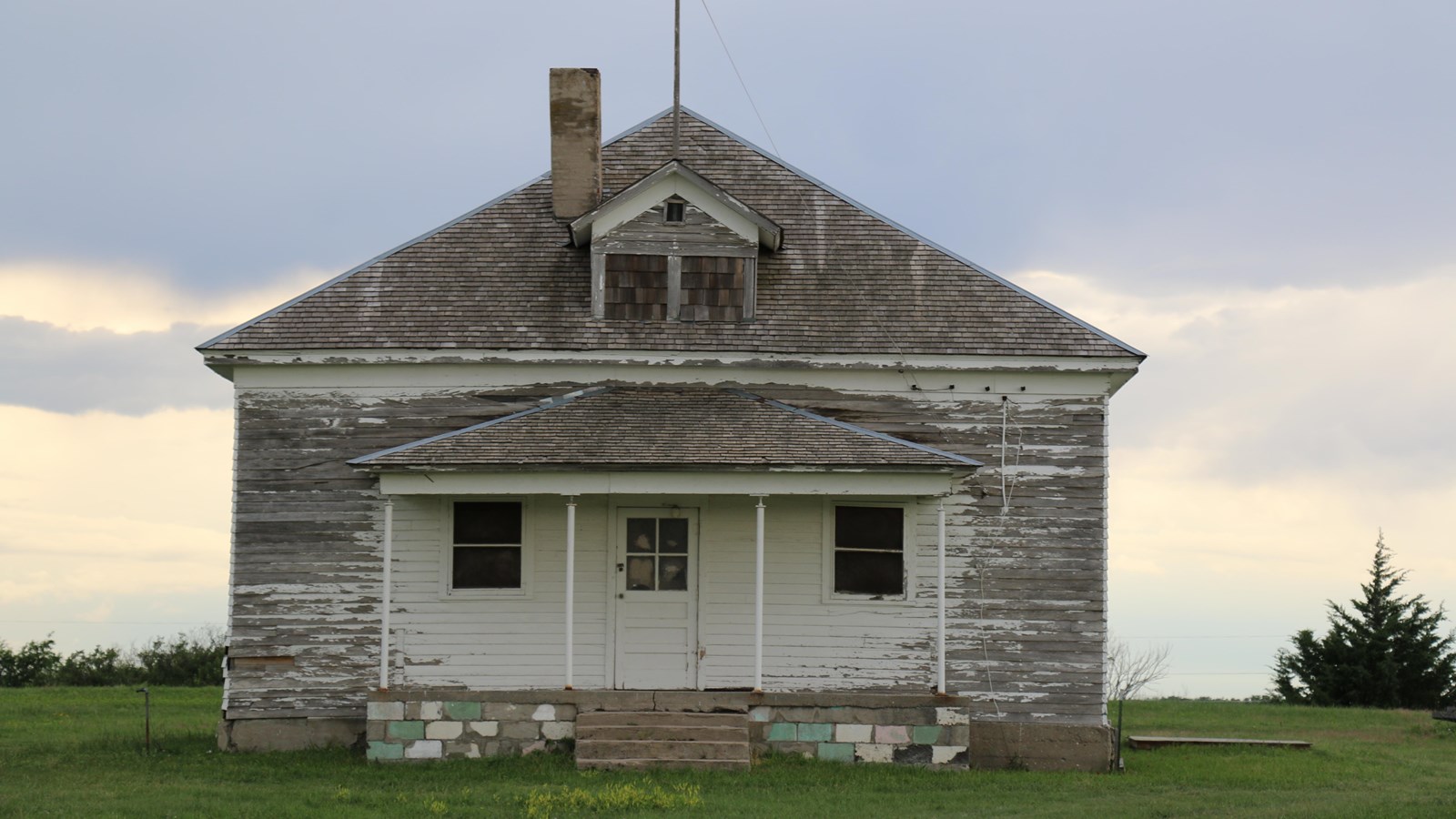Last updated: March 28, 2025
Place
School District Number 1

NPS Photo
The District #1 School represents the long history of education in Nicodemus.
Education is one of the five pillars that supports the community of Nicodemus. Since many early Nicodemus settlers had been enslaved and barred from education, sometimes violently, they understood its importance and wanted to establish a school as soon as possible. The unofficial first Nicodemus school started in the winter of 1877-1878, run by Jenny Fletcher in her and her husband Zach Fletcher’s dugout—a small home built into the ground, often on the side of a hill. About 15 students attended the first class and included children and adults who were eager to earn a basic education.
In 1879, with the leadership of Reverend Jerry Myers of the local A.M.E. Church, Nicodemus established the first school district in Graham County: School District #1. Town members selected a school board—Charles Page, Zach Fletcher, John Scott, and John Samuels—who then requested money to pay for a teacher and find a location for the school. The first official school term began in July 1879 with very few supplies and high expectations from parents anxious for their children to earn an education.
For several years, the school held classes in private homes around the community until residents voted to pass a bond for a permanent schoolhouse in June 1887. With this bond, town residents gave 2.45 acres of land to the school district. The 2-story, 4-room schoolhouse was built on this land for $1,000, which equals about $33,000 in 2025 currency.
Built at the height of the town’s population, the school district never used the schoolhouse to full capacity, usually only using two or occasionally a third room. Still, Nicodemus residents took pride in their school and had several respected teachers, including Ollie Scruggs, Ola Wilson, Adele Griffie Alexander, Earl Campbell, Nettie Craig, and Nicodemus historian Lulu Sadler Craig.
Unfortunately, the 1887 schoolhouse burned down in 1916. Nicodemus resident Ora Switzer recalled that while a new schoolhouse was built, School District #1 held classes in the First Baptist Church. 1918 saw the completion of a one-room, one-story schoolhouse, the building that stands today in Nicodemus.
Why downsize the schoolhouse? By 1918, the population of Nicodemus had declined to the point that recreating the larger 1887 schoolhouse was unnecessary. Despite the community’s population decline, though, the school remained busy. Oral histories share stories of sometimes putting a sheet down the middle of the classroom to separate 1st-4th grades and 5th-8th grades when there were enough students and teachers.
Several other schools served the wider Nicodemus community, including Fairview District #78, Mt. Olive District #57, Pleasant Ridge District #26, and Kebar District #36 in Wildhorse Township. While these started off as active schools, in 1945 they all consolidated with School District #1, requiring students from those districts to travel to the townsite for school. Additionally, the Fairview schoolhouse was moved next to the District #1 schoolhouse and used as an annex building for the 1st-4th grades.
However, enrollment declined in the late 1940s and 1950s, and the district sold the Fairview schoolhouse to the local American Legion. Enrollment continued to decline until School District #1 closed in the early 1960s, leading the remaining few students in Nicodemus to attend school in Bogue. In 1966, the school district donated the schoolhouse to the Nicodemus 4-H Club, which used it until the American Legion bought the building in 1983. The American Legion still owns the building, though it has not used the building actively since 1998.
Today, visitors can walk up to and around the historic District #1 School while visiting and consider the important role of education in the history and continued persistence of Nicodemus.
The five pillars of Nicodemus are five core values emphasized to achieve supportive and viable communities. Often, opportunities to experience these values were previously denied African Americans while enslaved and following emancipation: religion (culture of community), self-government (autonomy and decision-making), education (knowledge), family (extended community), and business (entrepreneurs).
